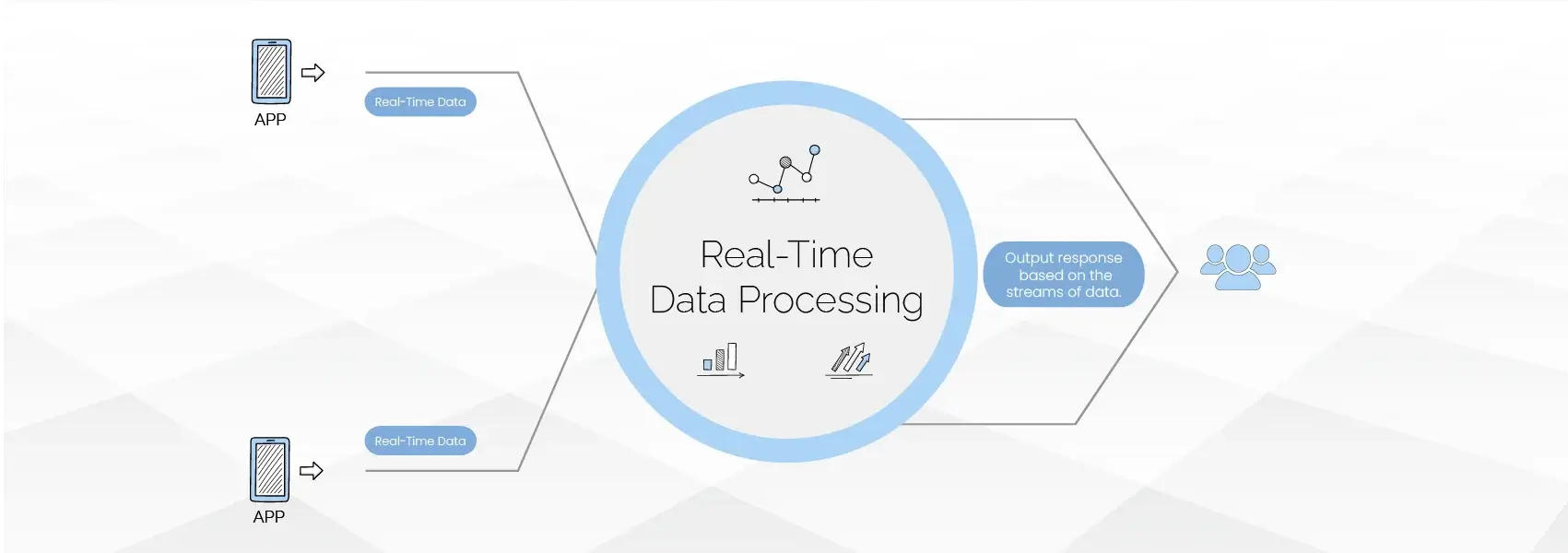Real-Time Processing
Real-Time Processing
Real-time processing is a mechanism that deals with data captured in real-time that uses minimal latency to generate automated responses or real-time reports. For instance, sensor data to identify high traffic volumes might be used by a real-time traffic monitoring solution. For dynamically updating a map to display congestion, start high-occupancy lanes, or manage other traffic management systems, this data could be used for random data engineering services.
Building scalable Production-grade Pipelines for real-time and batch processing, big data, SQL and no-SQL Processing


Real-Time Processing
Real-time processing is a mechanism that deals with data captured in real-time that uses minimal latency to generate automated responses or real-time reports. For instance, sensor data to identify high traffic volumes might be used by a real-time traffic monitoring solution. For dynamically updating a map to display congestion, start high-occupancy lanes, or manage other traffic management systems, this data could be used for random data engineering services.
Building scalable Production-grade Pipelines for real-time and batch processing, big data, SQL and no-SQL Processing
Challenges for Real-Time Processing
One of the biggest challenges for real-time processing solutions is to store, process, and ingest messages in real-time, more so at high volumes. Processing must not block the ingestion pipeline and hence should be done in such a way. Another challenge is to quickly write on data or present the data in a real-time dashboard for the sake of various Data engineering Solutions. A real-time processing architecture follows this series of logical components:
- Real-time message ingestion.
- Stream processing.
- Analytical data store.
- Reporting and analysis.
Technology Choices for Real-Time Processing
Real-time processing solutions rely on the following set of technologies:
- Apache Kafka
- Azure IoT Hub
- Azure Event Hubs
Data Storage in Real-Time Data Processing
Mainly, data in real-time processing is stored in Azure Storage Blob Containers or Azure Data Lake Stores. A message broker usually captures incoming real-time data but in certain cases, it is sensible to monitor the new files or make a folder of the process. Moreover, many real-time processing solutions combine static reference data with streaming data, which can be stored in file storage in both cases: Batch Processing vs Real-Time Processing.
Lastly, there come Stream Processing, Analytical data storing, and reporting and analysis. Realtime processing might be one of the last features in Data Engineering but it holds crucial importance as a technique across Data Engineering services and solutions while relying on real-time data processing python.
In a strict real-time solution, processing orchestration is done by the stream processing components and message ingestion. But a lambda architecture may require a different orchestration framework such as Apache Oozie and Sqoop or Azure Data Factory to manage batch workflows for real-time captured data.

